Dosidicus gigas – Humboldt Squid
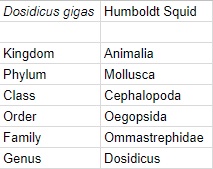

© Carrie Vonderhaar, Ocean Futures Society
D. gigas feeds on micronektonic prey such as other smaller squids, crabs, fish, and krill.
D. gigas was caught off the coast in Peru and then frozen for several months. Radula from this specimen measured at 6.3 cm and 7.1 cm.
Images from D. gigas display a heterodont radula with three cusps on the rhachidian tooth where the side cusps are almost the same length as the central cusp. The lateral tooth has two cusps, with the outside lateral tooth and marginal tooth having one cusp. This species does not appear to have any marginal plates.
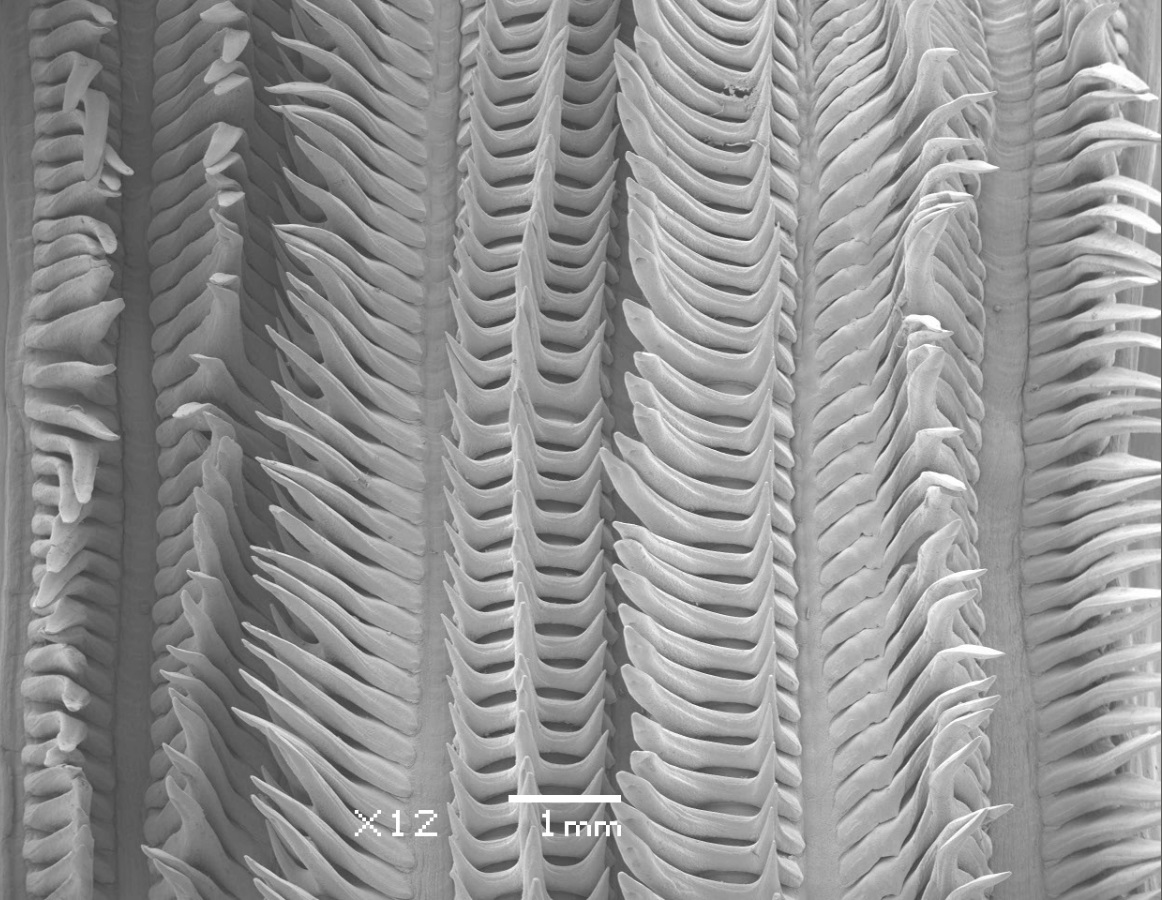
Radula of D. gigas taken by Sam Mejia
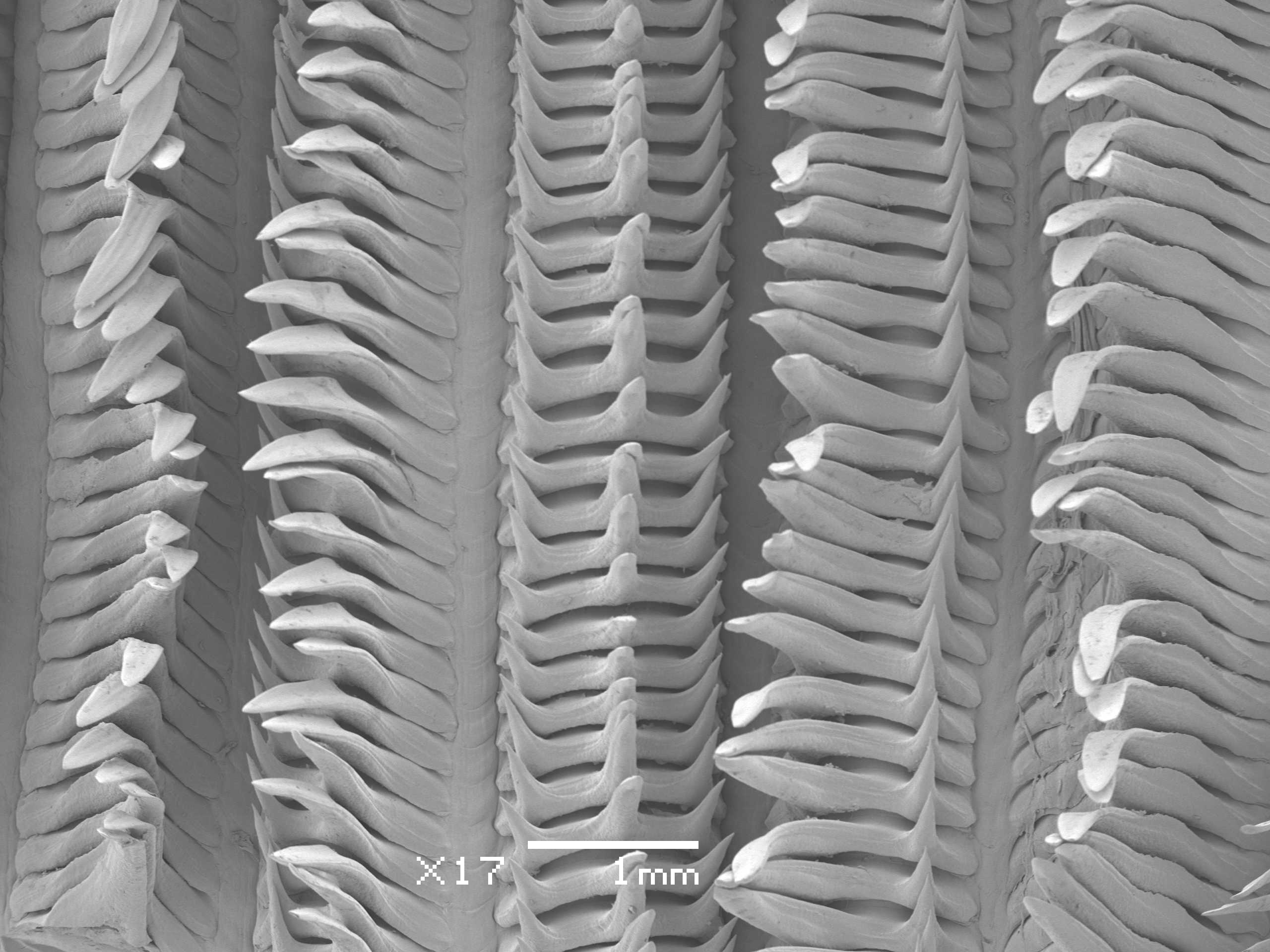
Radula of D. gigas (rachadian and lateral teeth) taken by Sam Mejia
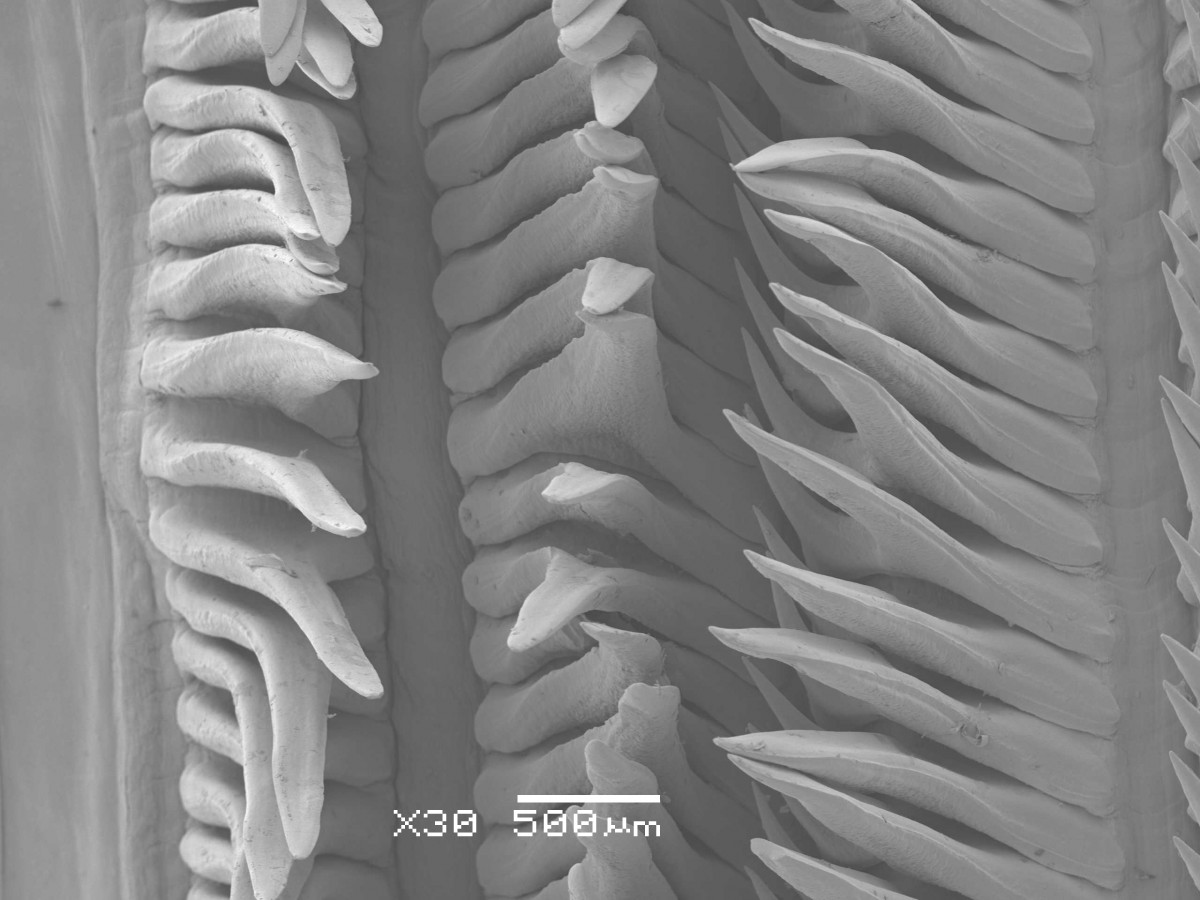
Close up of the outside marginal tooth and two lateral teeth taken of D. gigas taken by Sam Mejia
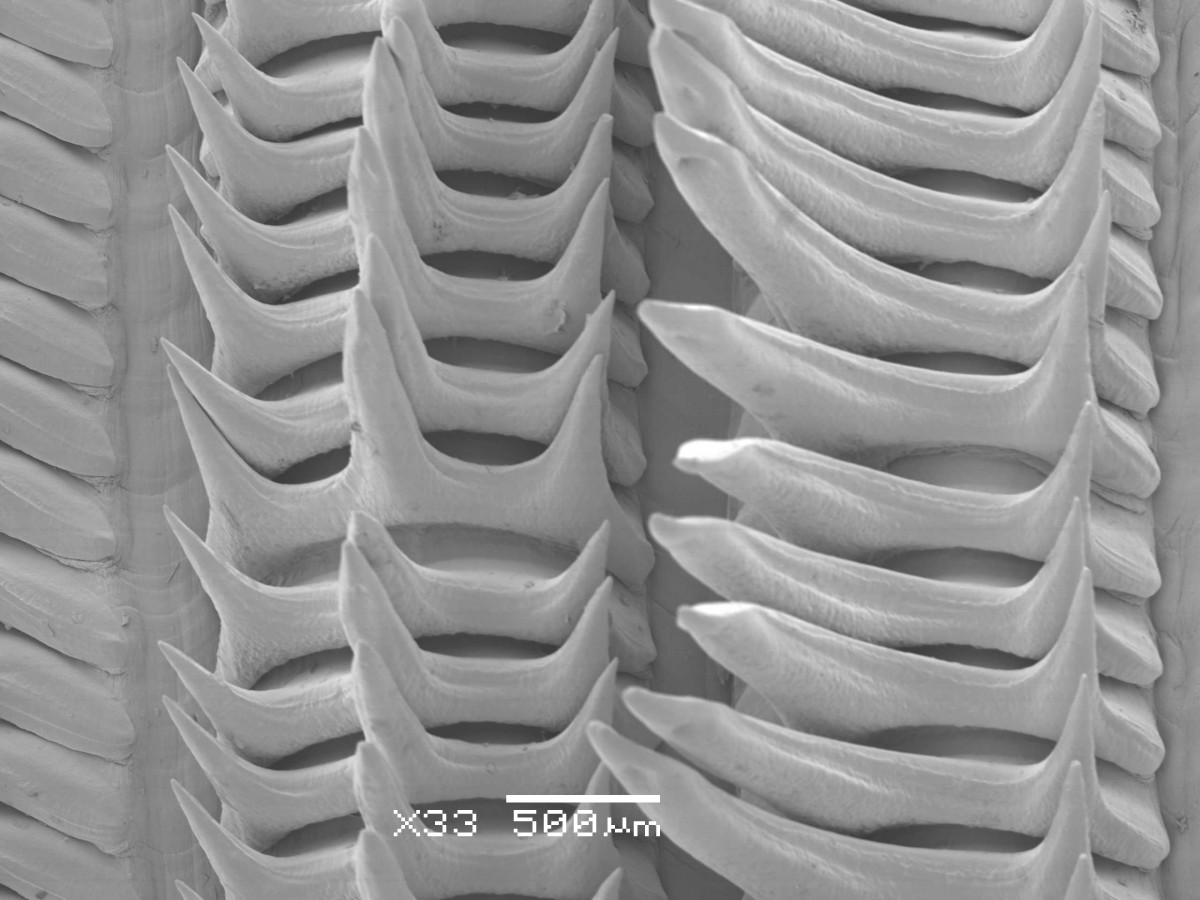
Close up of the rhachidian tooth and lateral tooth of D. gigas taken by Sam Mejia

Close up of the rhachidian tooth and lateral tooth of D. gigas taken by Sam Mejia
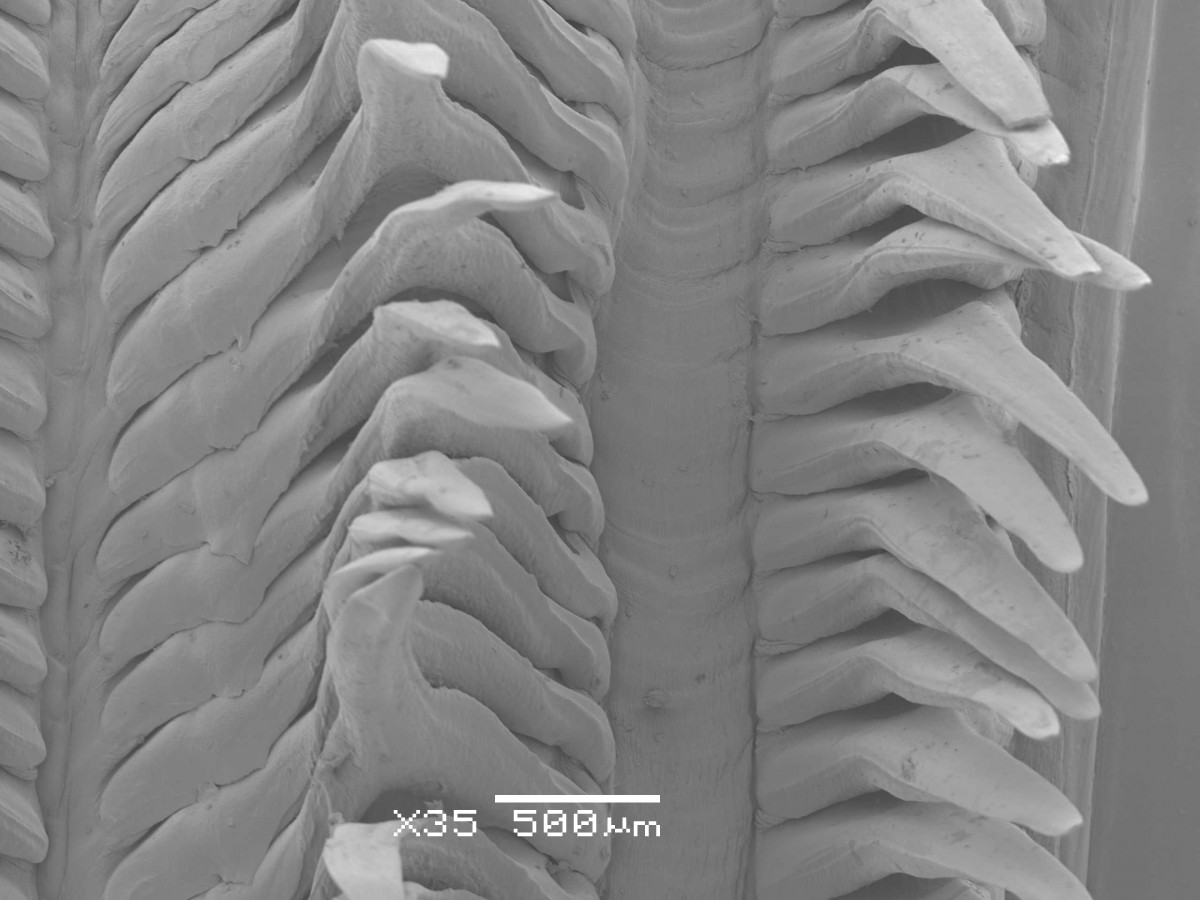
Close up of lateral tooth and marginal tooth of D. gigas by Sam Mejia
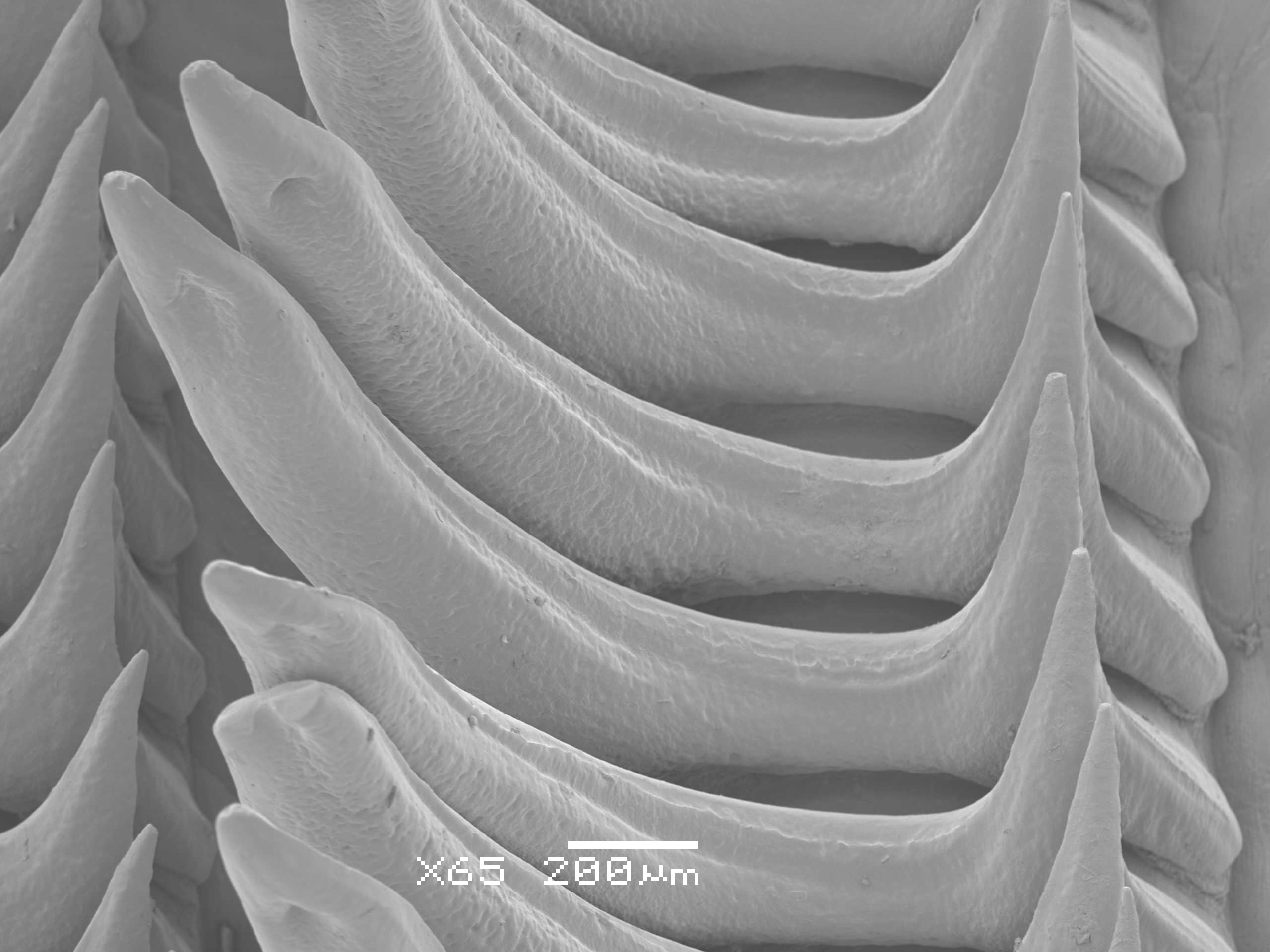
Close up of a lateral tooth of D. gigas taken by Sam Mejia
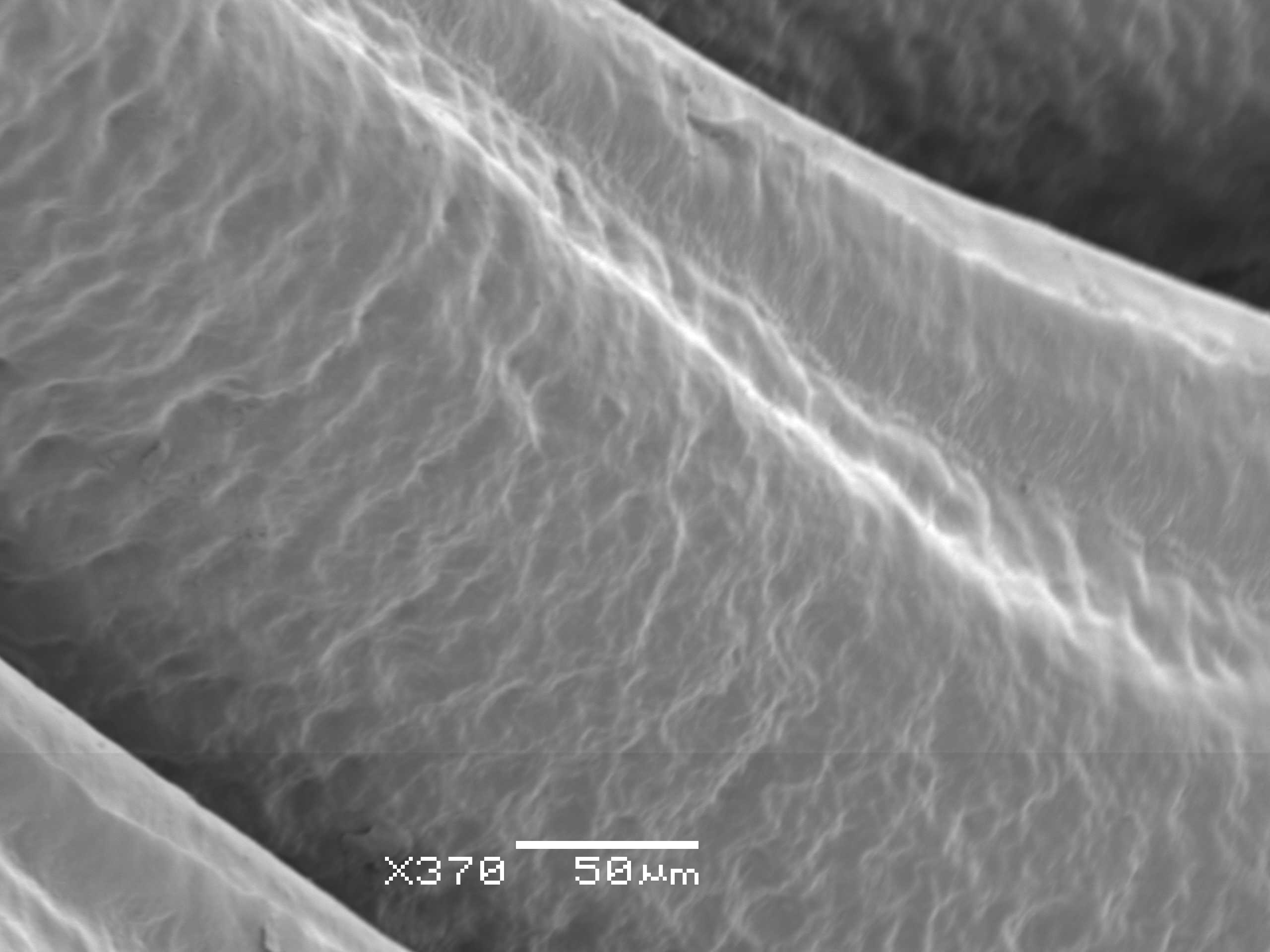
Close up of a lateral tooth of D. gigas taken by Sam Mejia
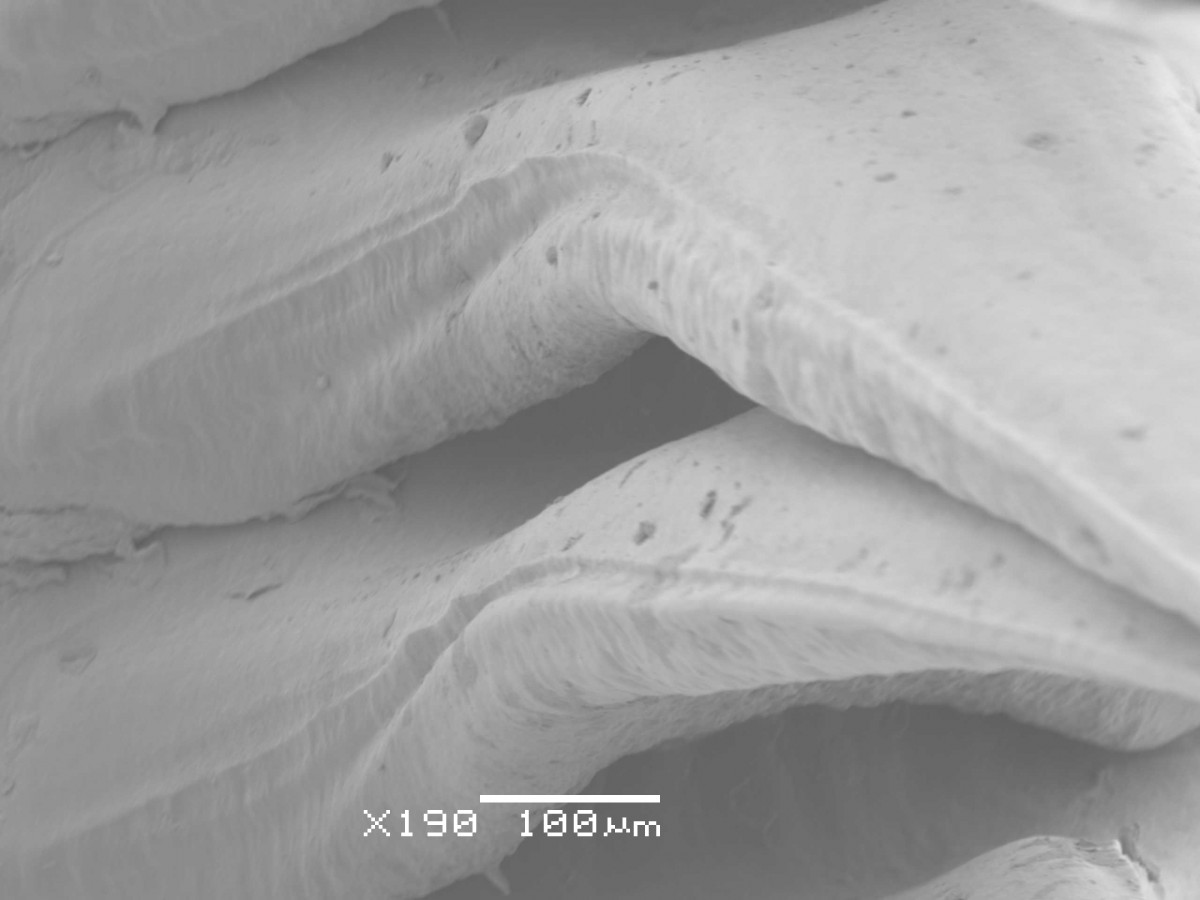 Close up of marginal teeth of D. gigas by Sam Mejia
Close up of marginal teeth of D. gigas by Sam Mejia

Close up of marginal tooth of D. gigas by Sam Mejia
Doryteuthis opalescens – California Market Squid
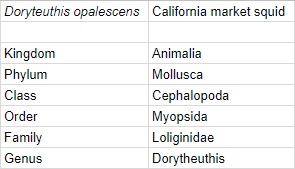
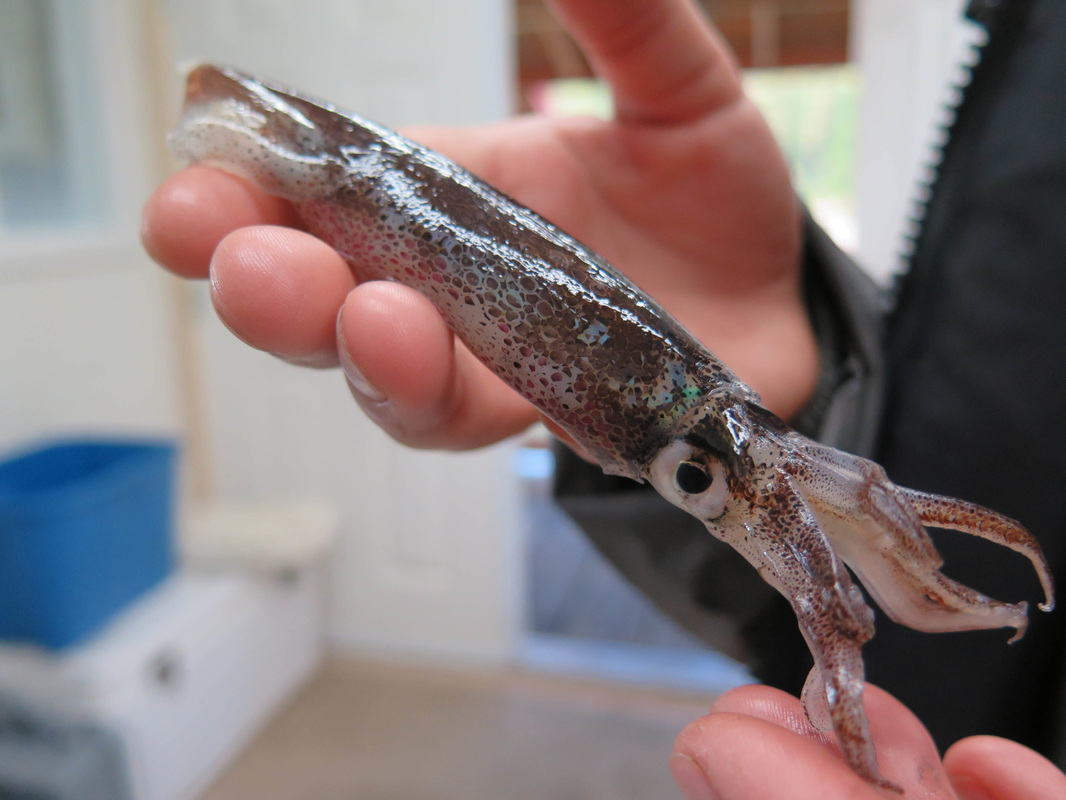
Photo by Angeleen Olson
D. opalescens feeds on polychaetes, crustaceans, and small fishes.
D. opalescens was bought from a supermarket and the buccal cavity was extracted using forceps. Radula from this specimen varied between 2.1 and 4.1 mm in length.
Images from D. opalescens detail a heterodont radula with three cusps on the rachadian tooth where the side cusps are distinctly shorter than the central cusp. The lateral tooth has two cusps with a larger cusp closest to the rachadian tooth. The outside lateral and marginal teeth both have one cusp but are shaped remarkably different from each other. There are also marginal plates along both sides of the row.
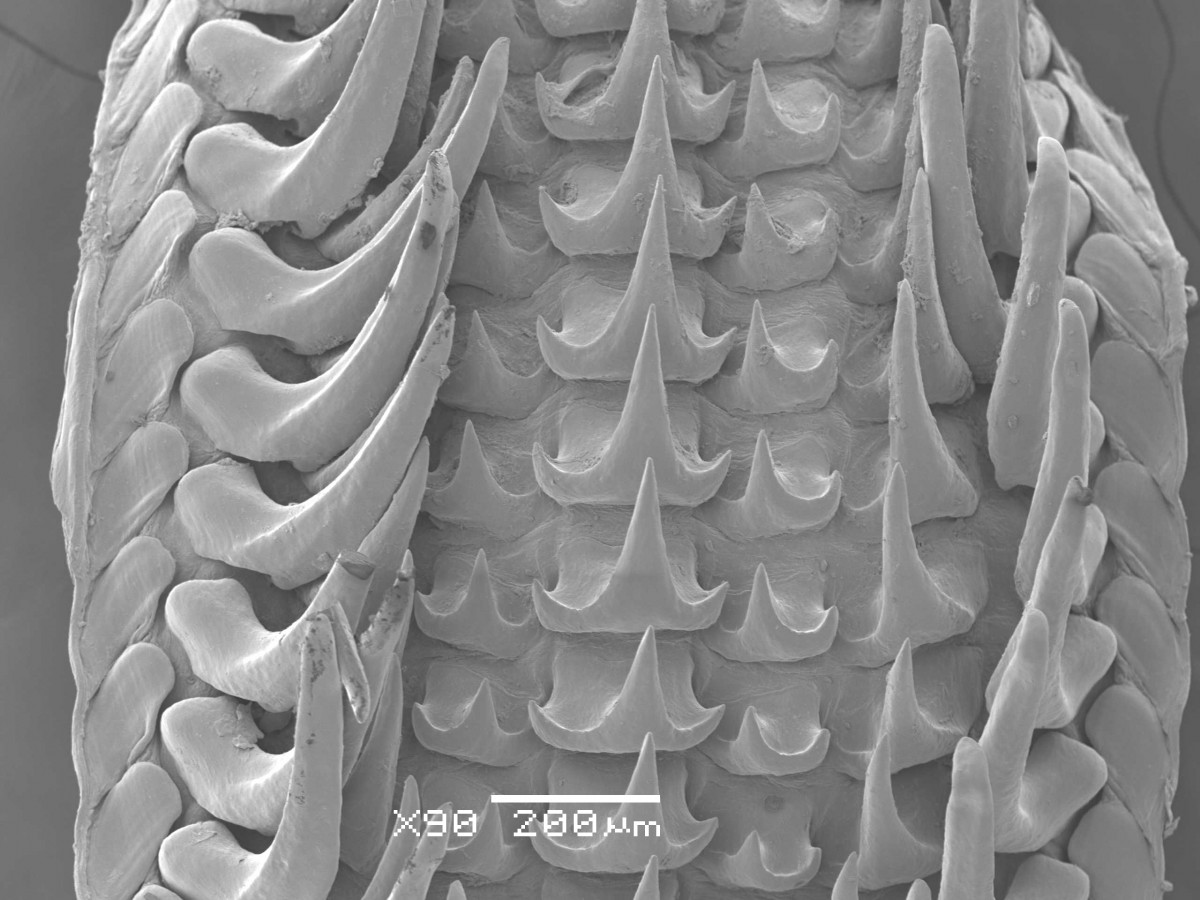
Radula of D. opalescens taken by Sam Mejia
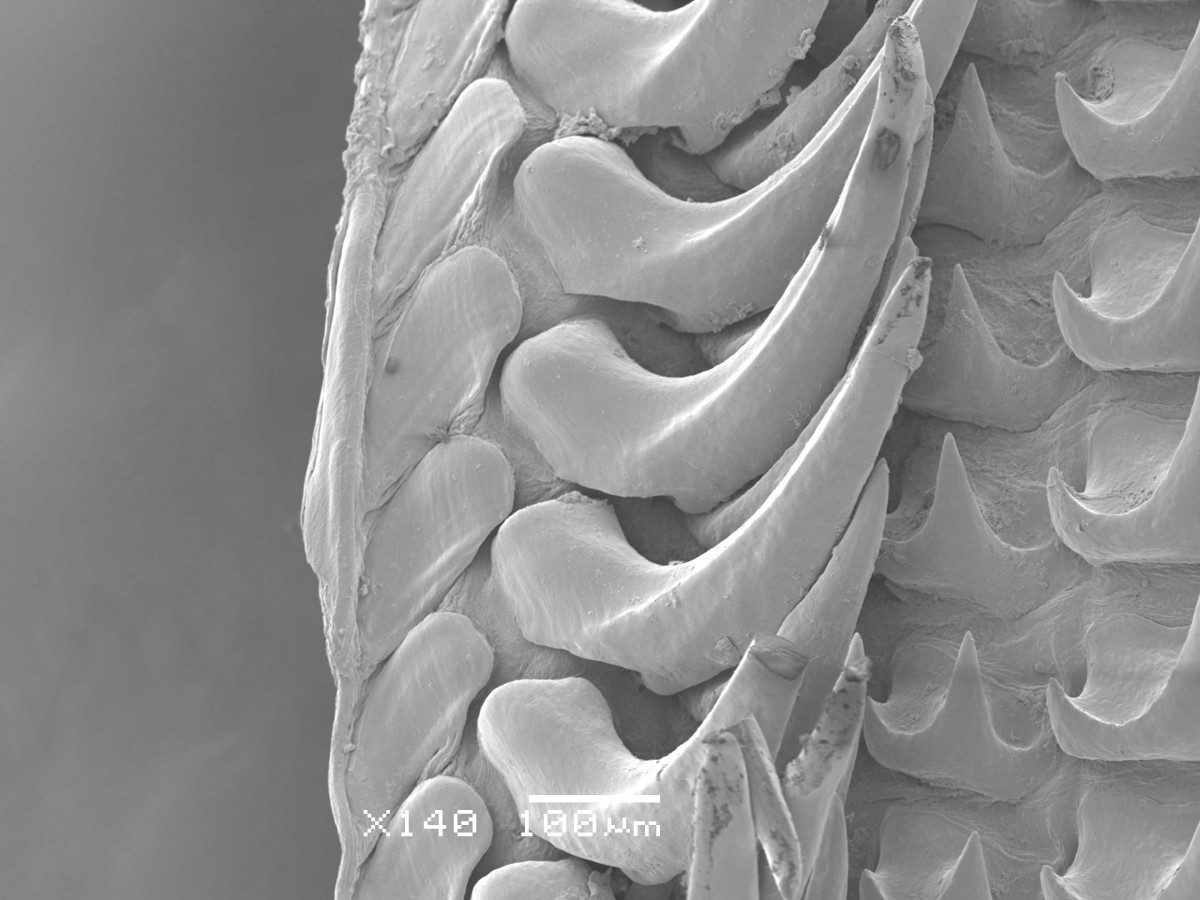
Close up of the marginal plate, marginal tooth, and two lateral teeth of D. opalescens taken by Sam Mejia
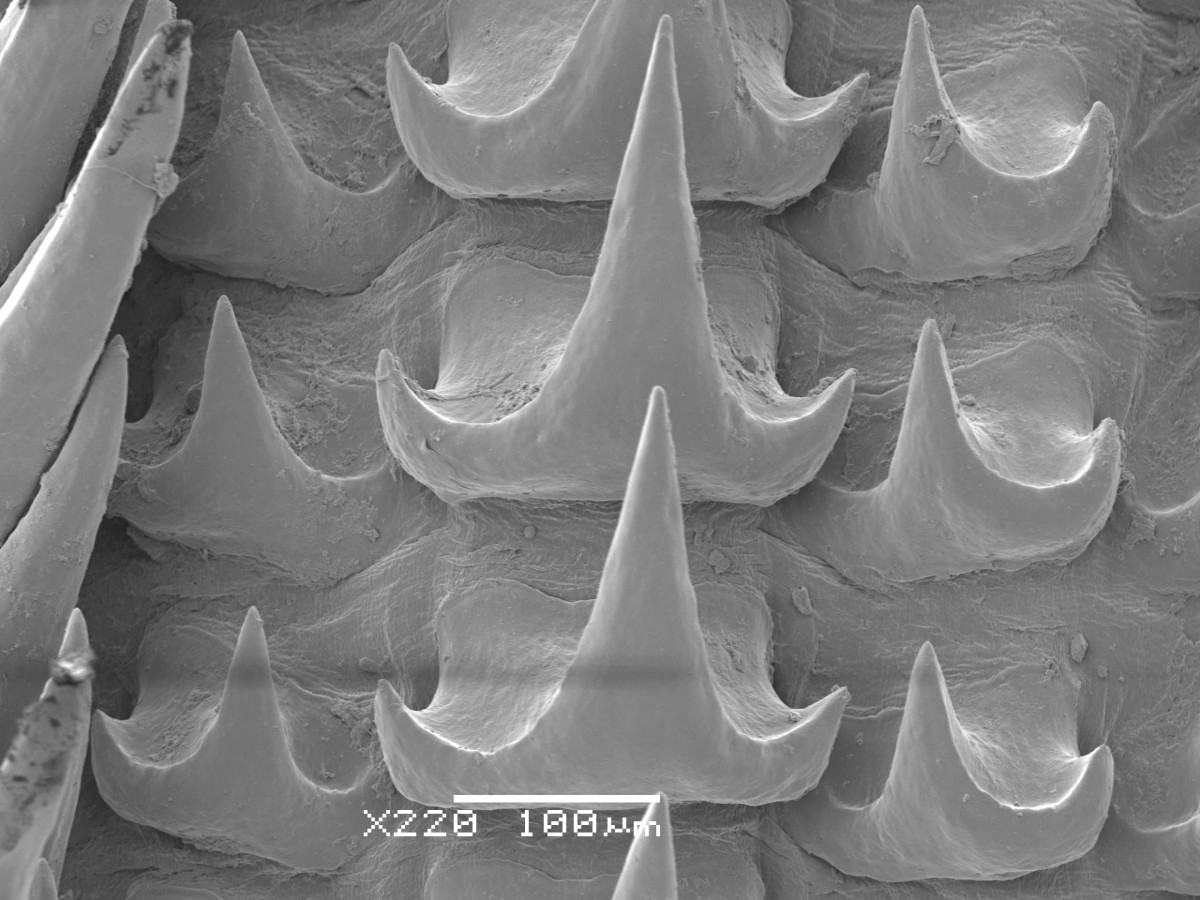
Close up of the rachadian tooth and lateral teeth of D. opalescens taken by Sam Mejia
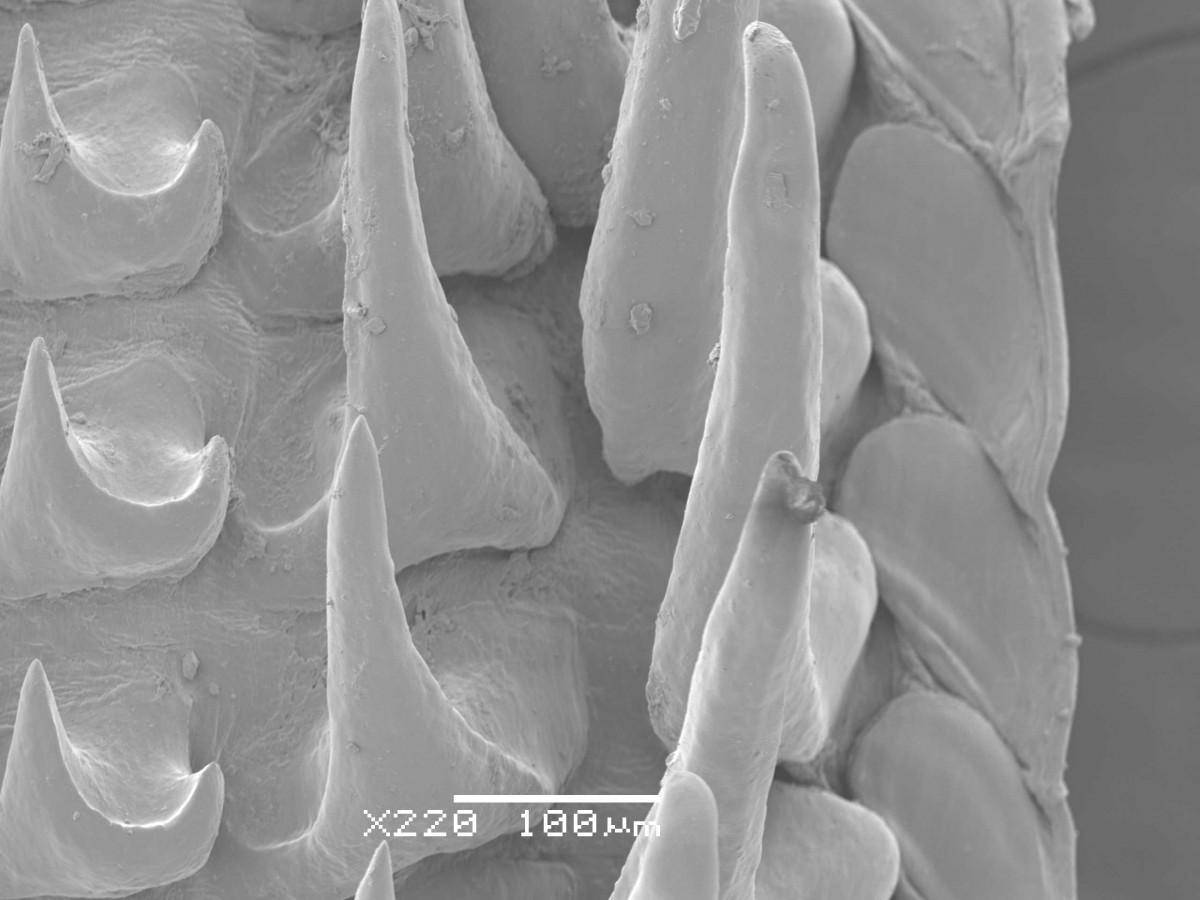
Close up of marginal plate, marginal tooth, and two lateral teeth of D. opalescens taken by Sam Mejia
Octopus bimaculoides – California two-spot octopus

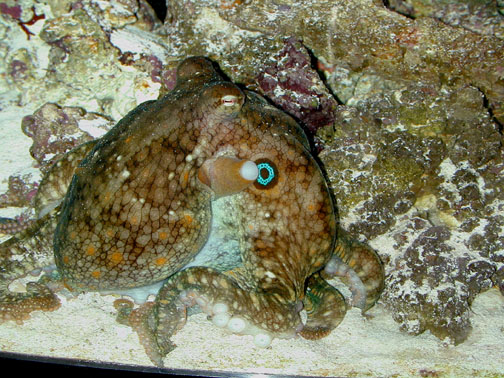
“Ollie”, about 9 months old — Photo by Nancy King
Images from O. bimaculoides detail a heterodont radula with three cusps on the rachadian tooth where the side cusps are distinctly shorter than the central cusp. The lateral tooth has two cusps with a larger cusp closest to the rachadian tooth. The outside lateral and marginal teeth both have one cusp but are shaped remarkably different from each other. There are also marginal plates along both sides of the row.

Radula of O. bimaculoides taken by Sam Mejia
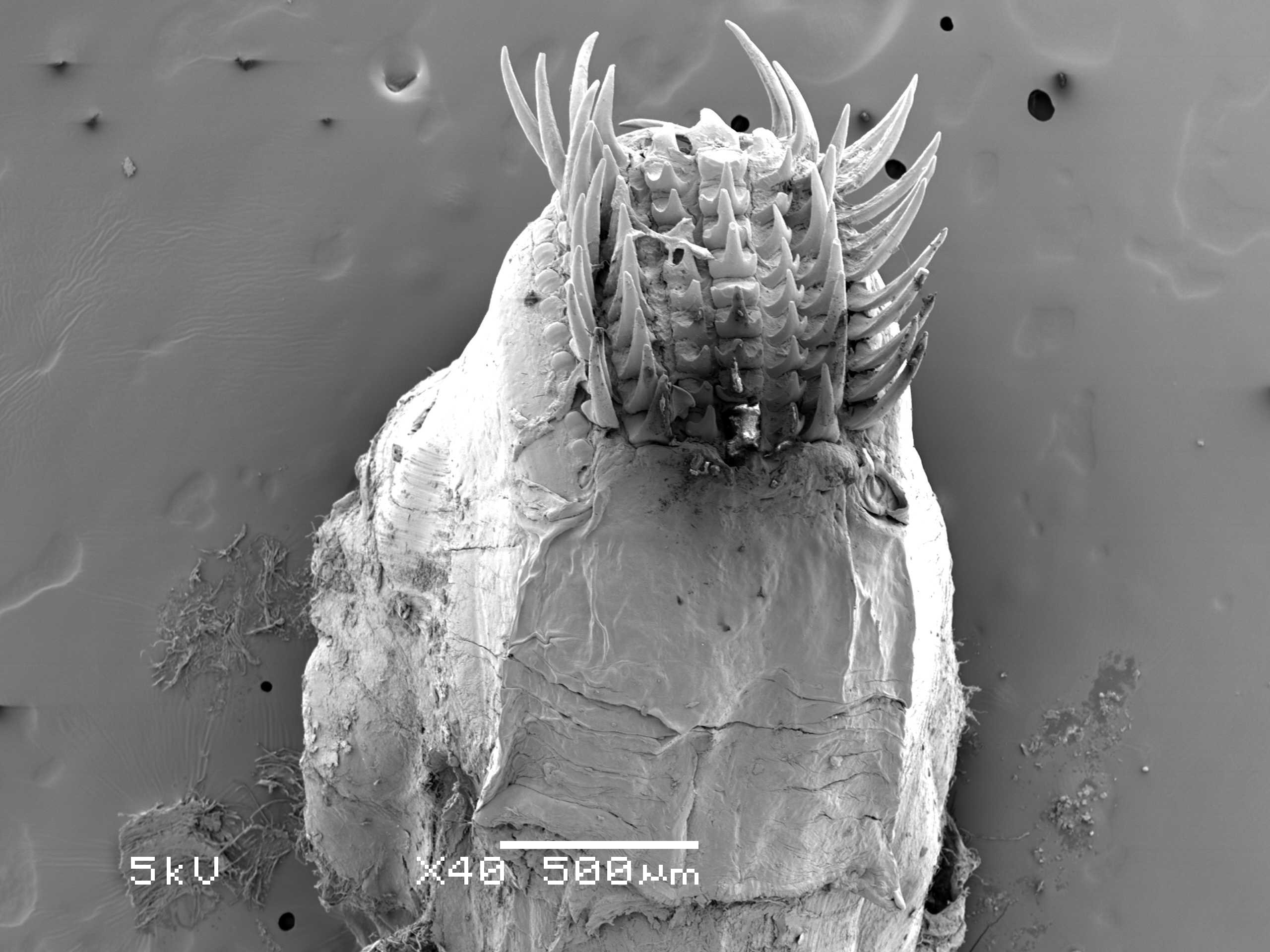
Radula of O. bimaculoides taken by Sam Mejia

Radula of O. bimaculoides taken by Sam Mejia

Radula of O. bimaculoides (with some measurements) taken by Sam Mejia

Radula of O. bimaculoides (with some measurements) taken by Sam Mejia
Octopus briareus – Caribbean reef octopus


Images from O. briareus detail a heterodont radula with three cusps on the rachadian tooth where the side cusps are distinctly shorter than the central cusp. The lateral tooth has one cusp with a larger curve closer to the rachadian tooth. The outside lateral and marginal teeth both have one cusp but are shaped remarkably different from each other. There are no distinctive marginal plates along both sides of the row.

Radula of O. briareus taken by Sam Mejia

Radula of O. briareus taken by Sam Mejia

Radula of O. briareus taken by Sam Mejia

Radula of O. briareus taken by Sam Mejia
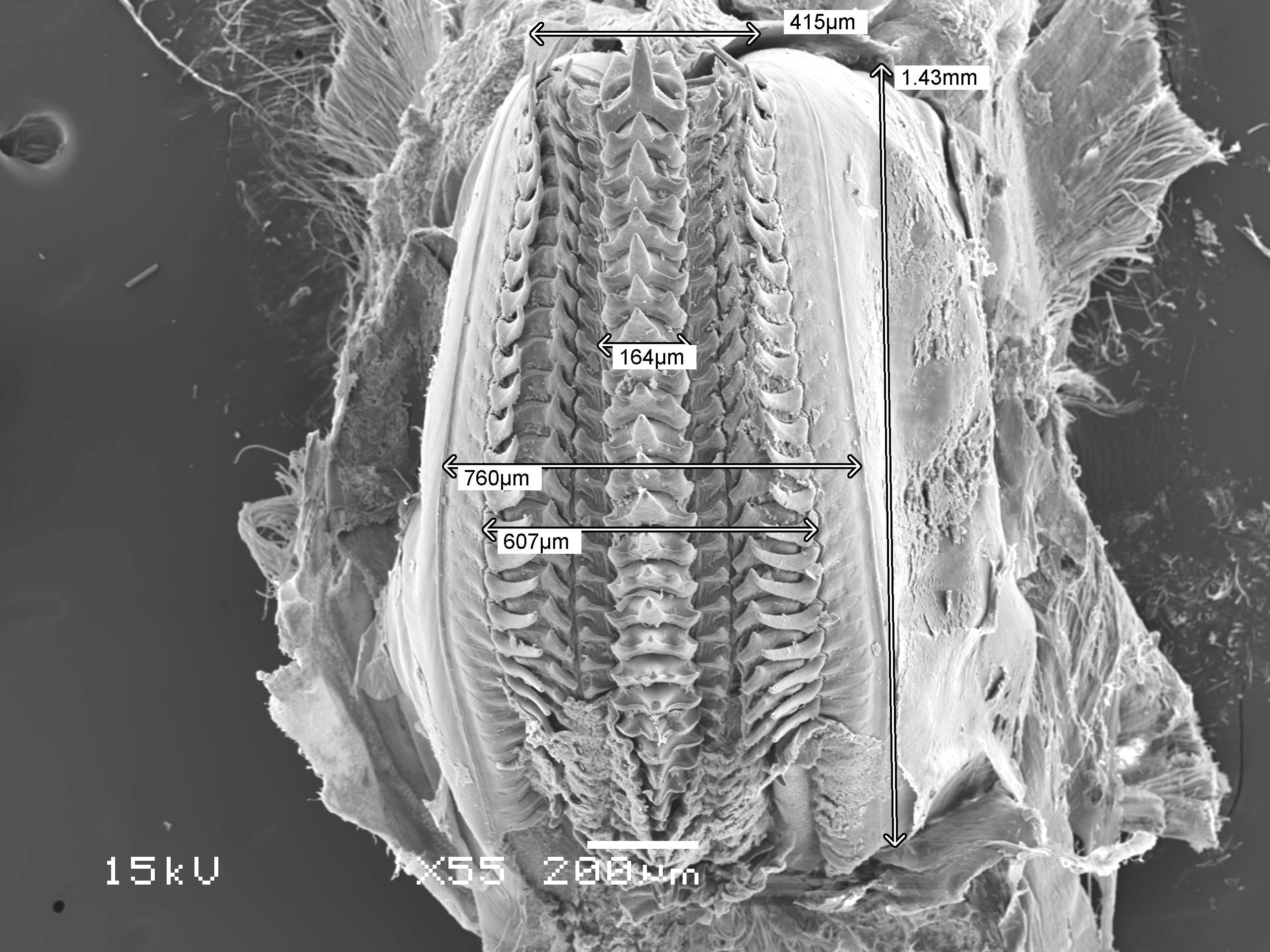
Radula of O. briareus (with some measurements) taken by Sam Mejia
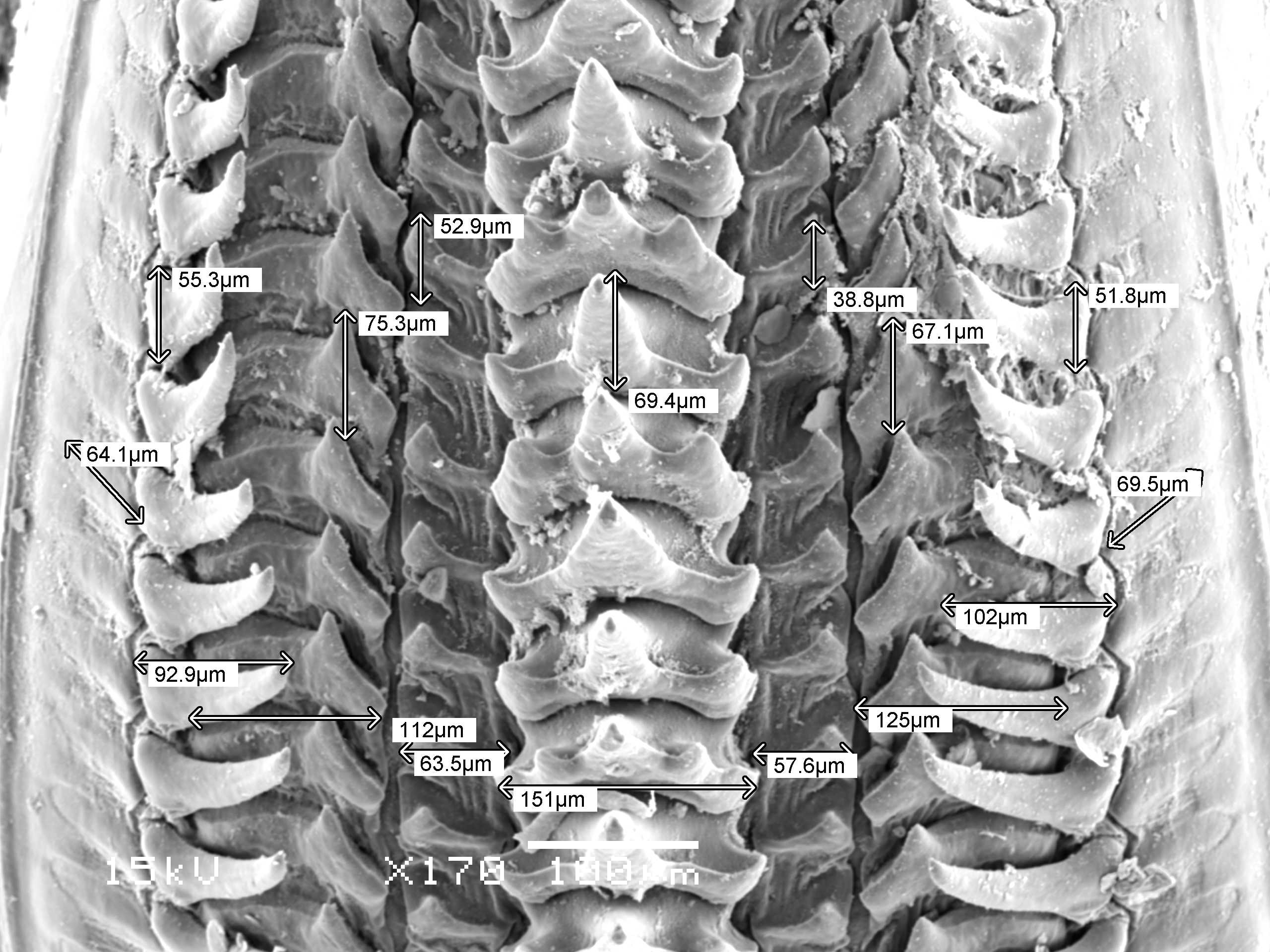
Radula of O. briareus (with some measurements) taken by Sam Mejia
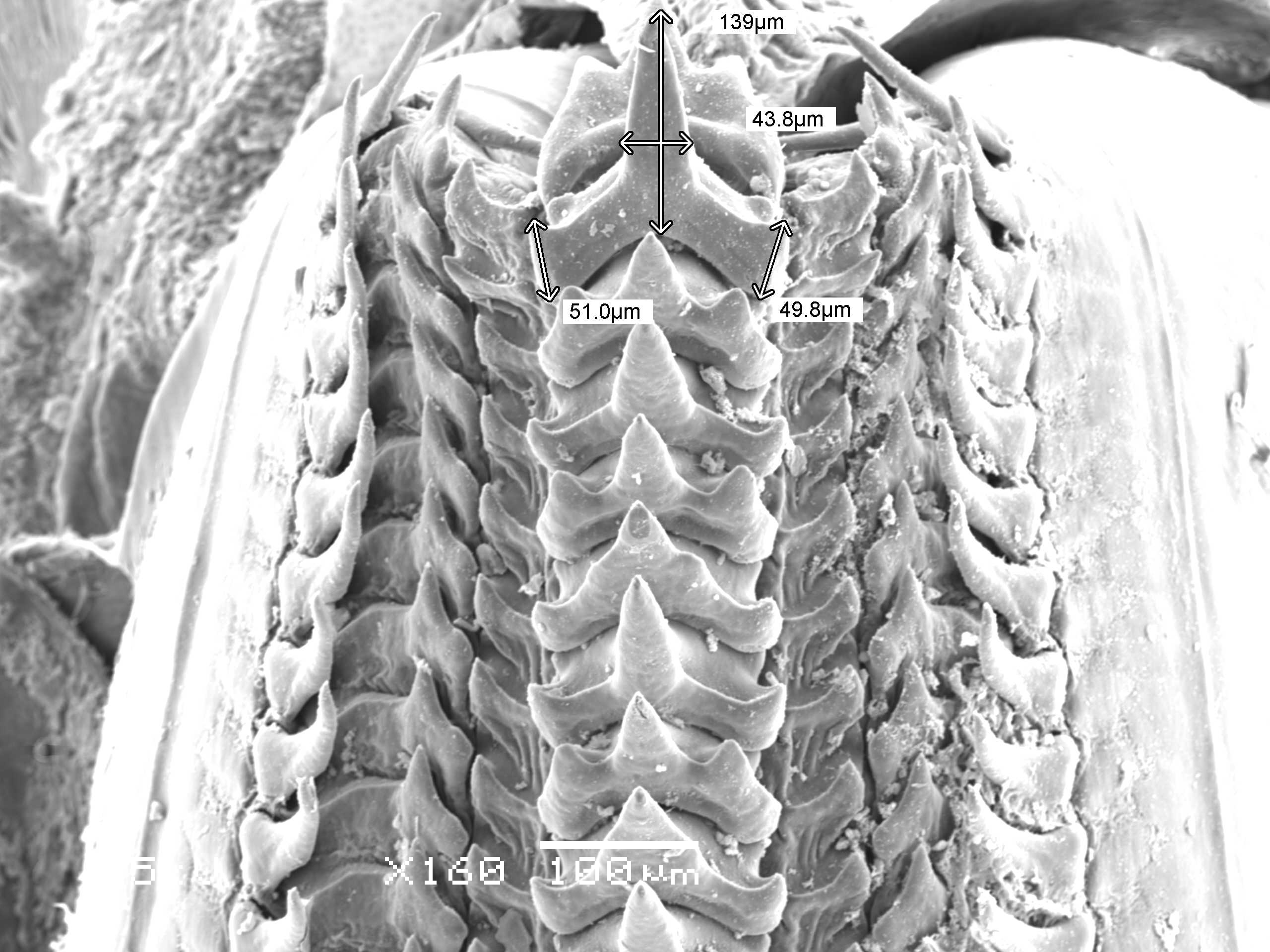
Radula of O. briareus (with some measurements) taken by Sam Mejia
Octopus hummelincki – Caribbean two-spot octopus

(c) 2015 Diane Whatley – Tonmo
Images from O. hummelincki detail a heterodont radula with three-five cusps on the rachadian tooth where the side cusps are distinctly shorter than the central cusp. The lateral tooth has one cusp with a larger curve closer to the rachadian tooth. The outside lateral and marginal teeth both have one cusp but are shaped remarkably different from each other. There are no distinctive marginal plates along both sides of the row.

Radula of O. hummelincki taken by Sam Mejia

Radula of O. hummelincki taken by Sam Mejia
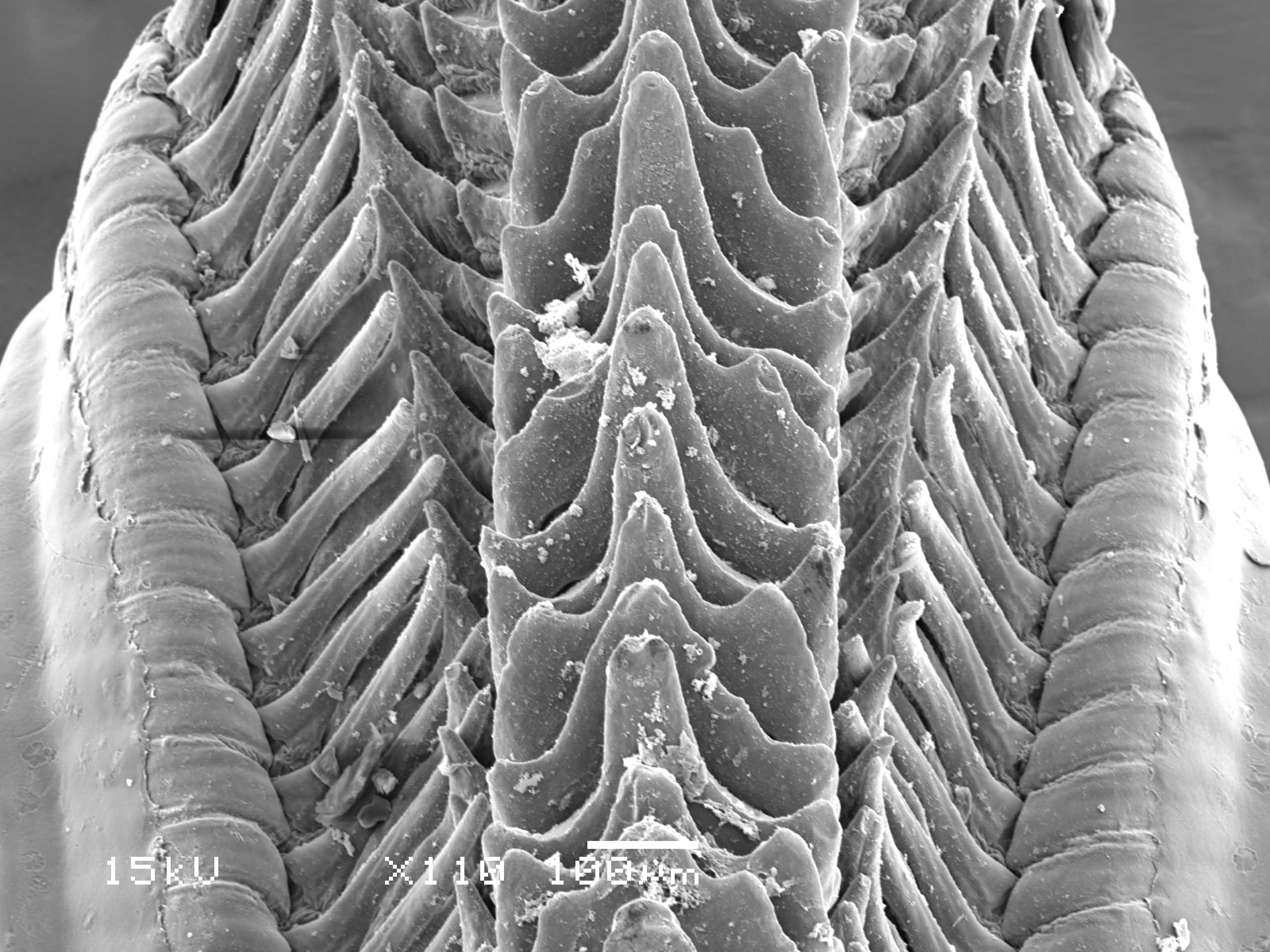
Radula of O. hummelincki taken by Sam Mejia

Radula of O. hummelincki taken by Sam Mejia

Radula of O. hummelincki taken by Sam Mejia

Radula of O. hummelincki taken by Sam Mejia

Radula of O. hummelincki (with some measurements) taken by Sam Mejia
Doryteuthis pealeii – Longfin inshore squid

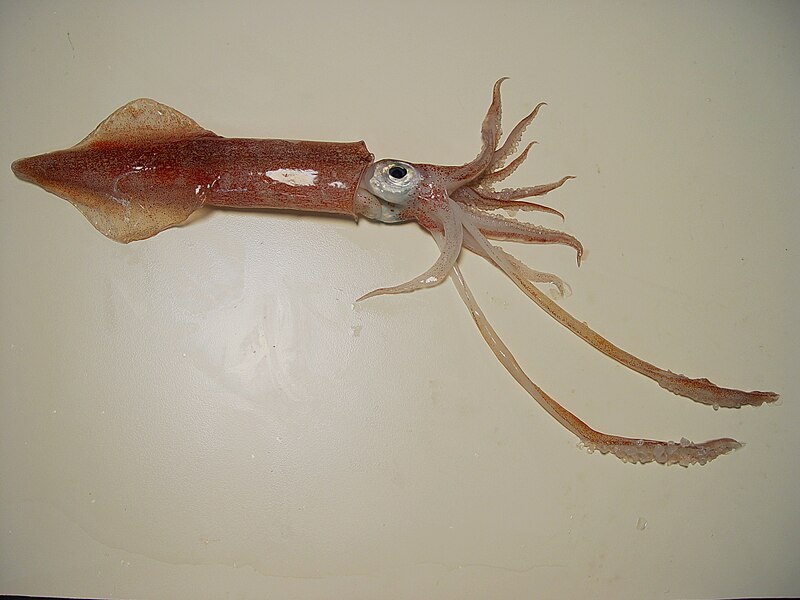
SEFSC Pascagoula Laboratory; Collection of Brandi Noble, NOAA/NMFS/SEFSC
Images from D. pealeii detail a heterodont radula with five cusps on the rachadian tooth where the side cusps are distinctly shorter than the central cusp. The lateral tooth has one cusp with a larger curve closer to the rachadian tooth. The outside lateral and marginal teeth both have one cusp but are shaped remarkably different from each other. There are distinctive marginal plates along both sides of the row.

Radula of D. pealeii taken by Sam Mejia

Radula of D. pealeii taken by Sam Mejia

Radula of D. pealeii taken by Sam Mejia

Close up of rachadian and lateral teeth of D. pealeii taken by Sam Mejia

Close up of marginal plate and marginal teeth of D. pealeii taken by Sam Mejia

Radula of D. pealeii taken by Sam Mejia

Radula of D. pealeii (with some measurements) taken by Sam Mejia
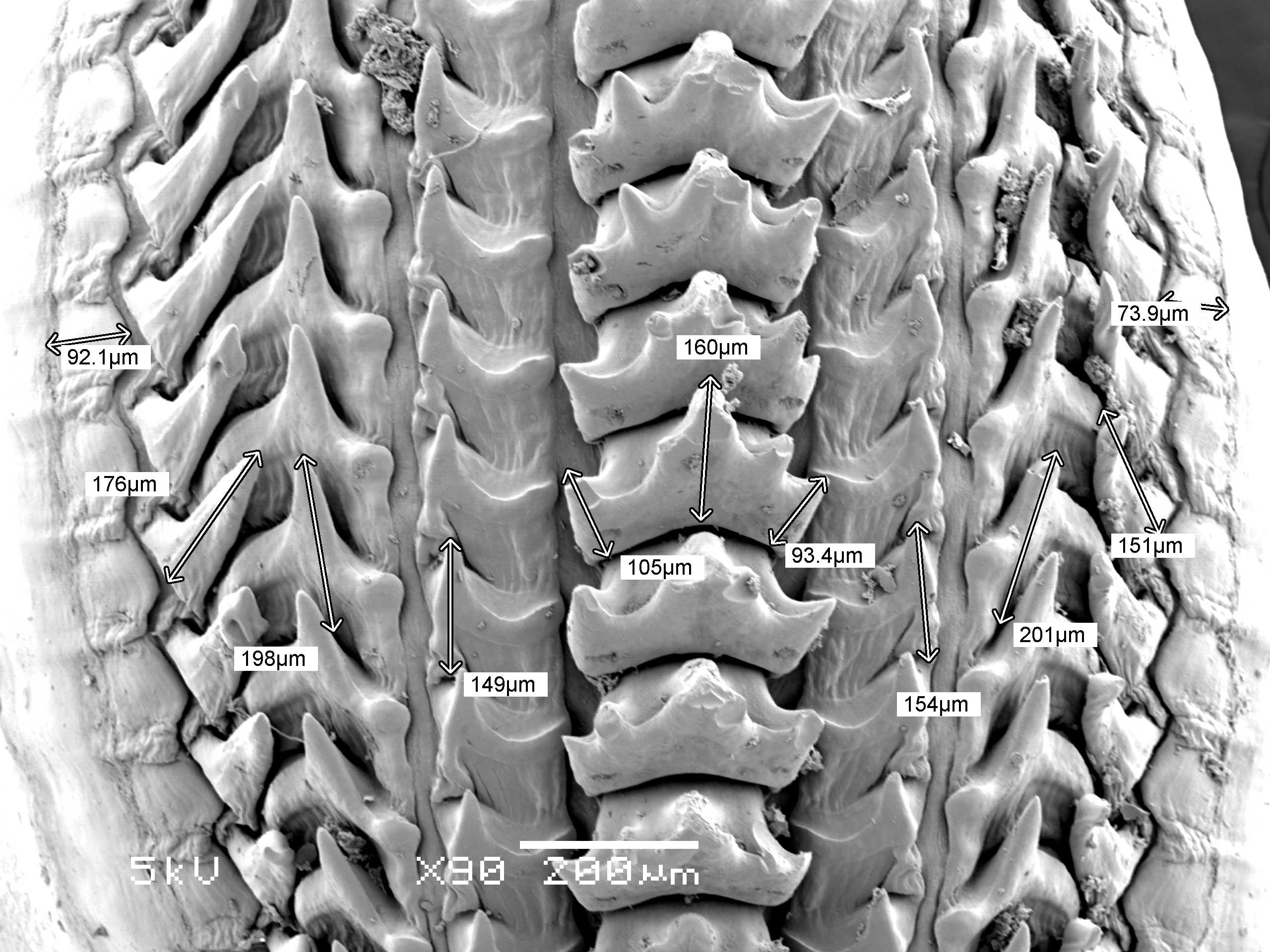
Radula of D. pealeii (with some measurements) taken by Sam Mejia

Radula of D. pealeii (with some measurements) taken by Sam Mejia

Radula of D. pealeii (with some measurements) taken by Sam Mejia
Taonius borealis – Translucent cockatoo squid


Images from T. borealis detail a heterodont radula with three cusps on the rachadian tooth where the side cusps are distinctly shorter than the central cusp. The lateral tooth has two cusps with a larger cusp closer to the rachadian tooth. The outside lateral and marginal teeth both have one cusp but are shaped remarkably different from the others. There are distinctive marginal plates along both sides of the row.

Radula of T. borealis taken by Sam Mejia

Radula of T. borealis taken by Sam Mejia

Radula of T. borealis taken by Sam Mejia

Radula of T. borealis taken by Sam Mejia

Radula of T. borealis (with some measurements) taken by Sam Mejia
Enteroctopus dofleini – Giant pacific octopus
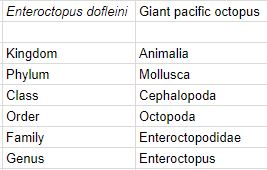
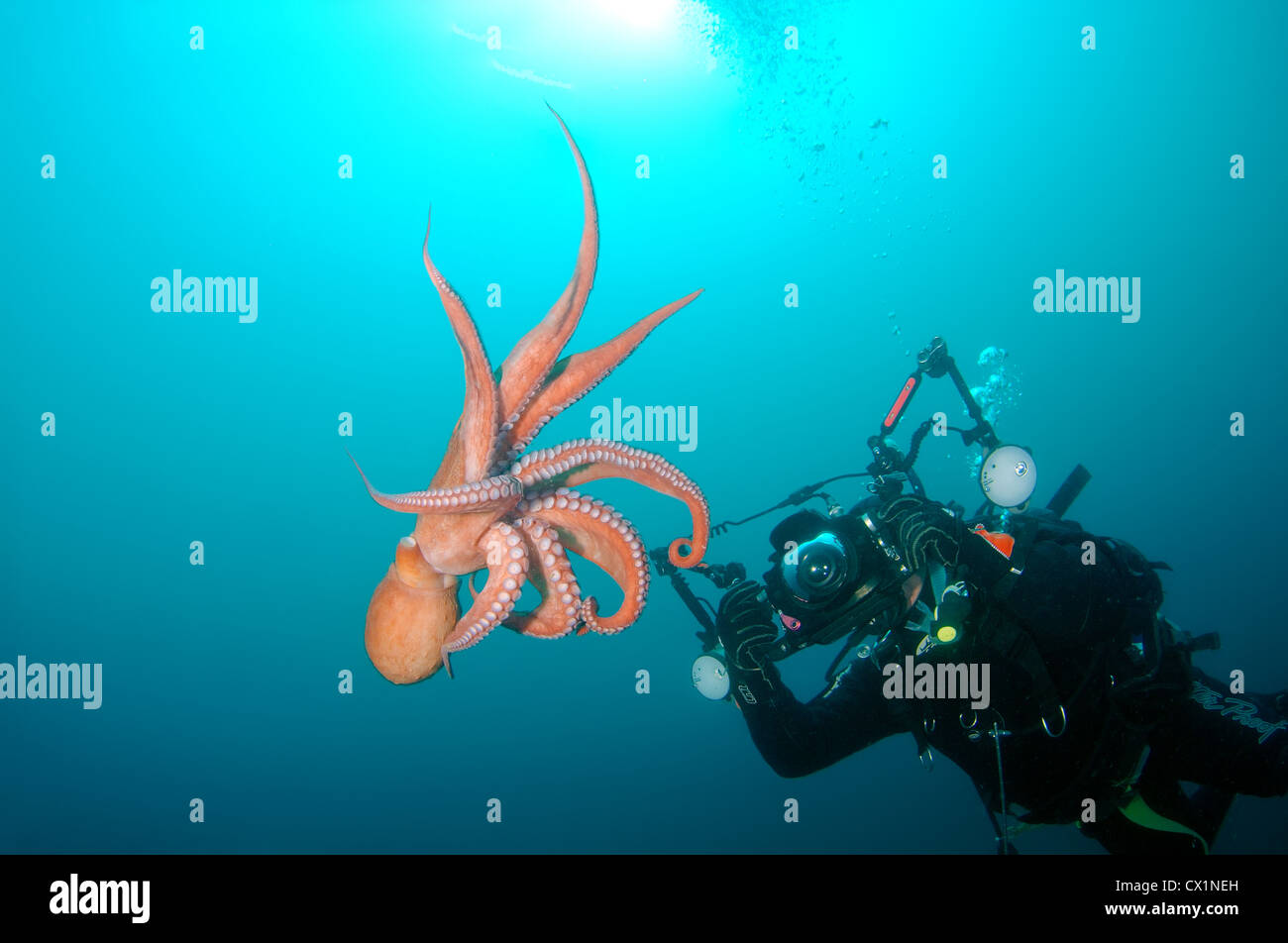
Images from E. dofleini detail a heterodont radula with five cusps on the rachadian tooth where the side cusps are distinctly shorter than the central cusp. The lateral tooth has two cusps with a larger cusp closer to the rachadian tooth. The outside lateral and marginal teeth both have one cusp but are shaped remarkably different from the others. There are distinctive marginal plates along both sides of the row.
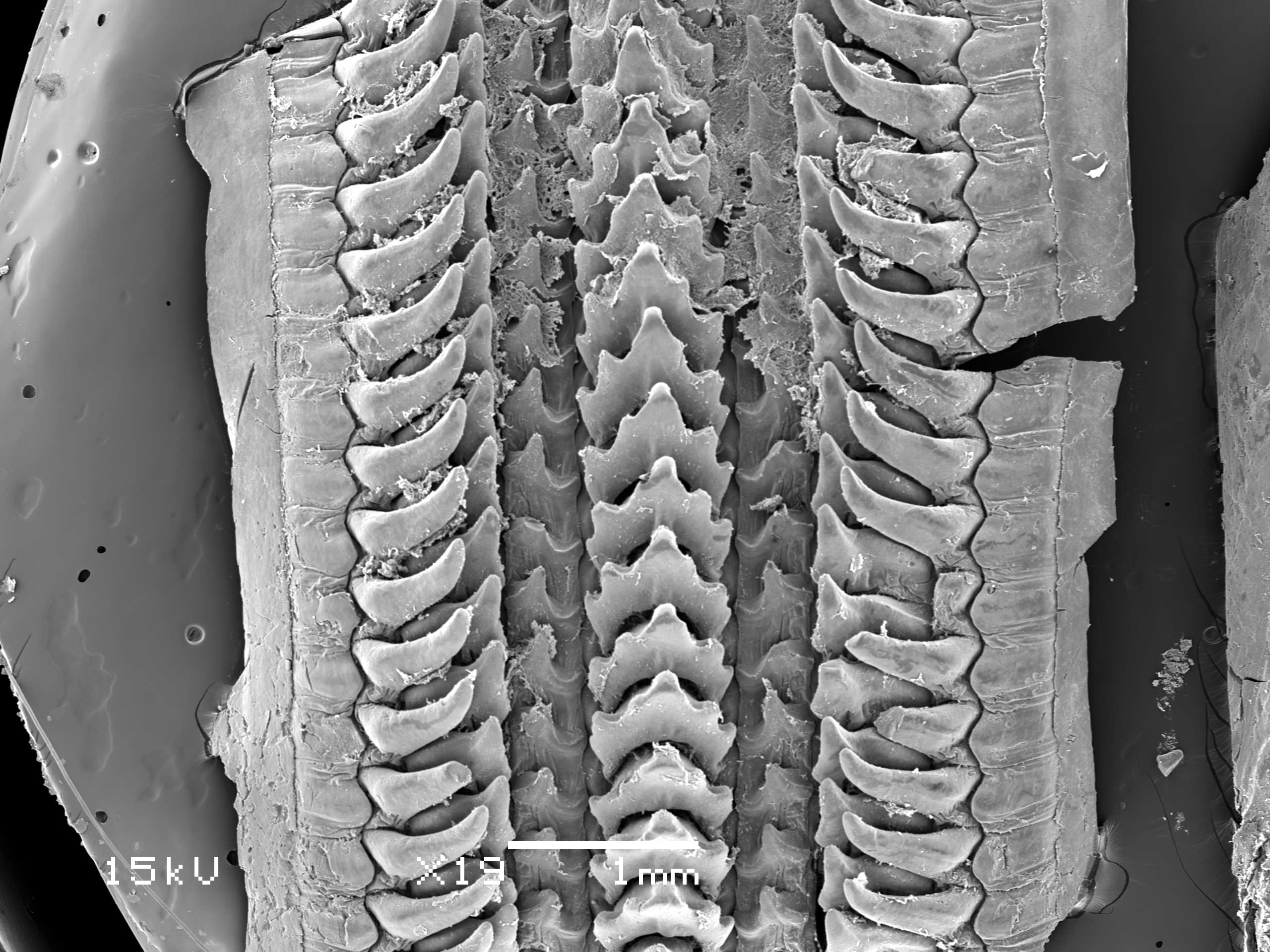
Radula of E. dofleini taken by Sam Mejia

Radula of E. dofleini taken by Sam Mejia

Radula of E. dofleini taken by Sam Mejia

Radula of E. dofleini taken by Sam Mejia

Radula of E. dofleini (with some measurements) taken by Sam Mejia

